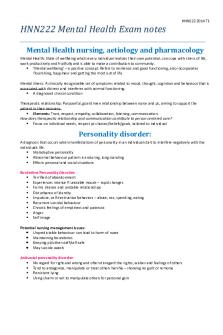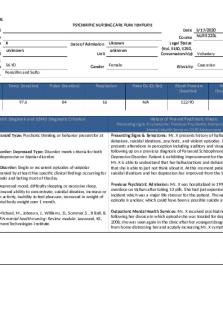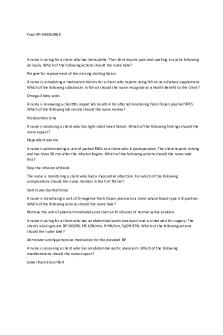Cultural Considerations in Mental Health Nursing PDF

| Title | Cultural Considerations in Mental Health Nursing |
|---|---|
| Course | Mental Health Nursing |
| Institution | Rasmussen University |
| Pages | 5 |
| File Size | 99.3 KB |
| File Type | |
| Total Downloads | 80 |
| Total Views | 147 |
Summary
Cultural consideration written assignment...
Description
1
Cultural Considerations in Mental Health Nursing Rasmussen University NU249/NUR2488 Section RFPA1A0Z Mental Health Nursing
July 25, 2021
2
Cultural Considerations in Mental Health Nursing With so many cultures out in the world today, it is important for us to understand them. By being able to understand these cultures, it wall allow to properly care patients in any medical setting. When a patient is mentally ill, we as health care provides need to remember that the patient still has rights, and it is our duty to make sure their rights are upheld. Culture is not the only aspect that makes up the patient’s identity. It can also include sexual orientation, gender equality, and other cultures besides race and religion. In this scenario I will be discussing a 24-year-old female patient with Latino descent, specifically Mexican. The Latino community can be very private and may not talk publicly about challenges at home, which leads to the mental health stigma they have. Growing up they are taught that problems happening at home stay at home, as other people don’t need to know our problems. They also fear being labeled as “locos” (crazy) or bringing shame or unwanted attention to their family (Hispanic/Latinx, n.d.). When it comes to the Mexican culture, they do not worship at a certain day or time so we must keep in mind that the patient might want to stop and pray at any time. When it comes decision making, the individual’s parents are usually the ones to make the final call. When the patient is admitted, I would assess to see how much the patient follows her Mexican culture. I will also ask how much she allows her family to make decisions for her, if any. Also, if she would prefer to have parents with her, we would have to wait to further evaluate her until her parents arrive to continue. The Mexican culture does not have any diet restrictions, and they try to incorporate a little of everything in each of their meals. They do tend to cook with a lot of oil so that is something to consider.
3
This patient is showing signs of depression and anxiety and has expressed her feelings. She has complained about restlessness and insomnia, and headaches and aches that don’t seem to go away. She has an increased heart rate of 90 beats per minute and she is breathing heavily. She is having difficulty concentrating on the assessment and the questions that have been asked, as she has asked to repeat the questions several times. She mentions to the nurse that she feels worthless and that she is a failure to her parents and family. Based on what the patient has told the nurse, she has reasons to believe this patient is at risk for depression and anxiety or has already developed it. A nursing diagnosis for this patient could be impaired social interaction related to her feelings of worthlessness and disturbance in thought process. To help the patient with their mental health it would be in our best interest to inform her family of the situation. The family not being informed of the patient’s current mental status, especially if unstable, could increase her instability. They would be caused if a family member says or comments on something and the patient not taking it well. Our patient does not fallow a particular cultural belief that would prevent them from taking medications that will help with her symptoms. This means that getting her on medication such as anti-depressants or anti-anxiety drugs would be culturally safe to help her symptoms. One intervention that could be taken to ensure the safety of the patient is referring the patient and her family to a counselor and/or therapist. This will help both the patient and family gain support and ask any questions they may have. This would be ensuring our client’s safety because her family will gain knowledge on how to help her in this situation and she will learn skills that will help her cope with her feeling.
4
I will be able to evaluate if the implementations that were put into places were effective if the patient’s feelings have been alleviated by the medications that were prescribed to her. Also, by noting how she feels after meeting with the counselor and/or therapist that she was referred to. You will also be able to tell if the implementations helped by simply observing how your patient is looking. For example, her heart rate has decreased, she is more focused and alert, and she looks calm. In conclusion, the completed interventions have been successful so far. By continuing to monitor this patient and setting new and/or continuing with her current care plan, will help improve her mental health.
5
References
Bruce, D. F. (n.d.). Signs of Clinical Depression: Symptoms to Watch For. WebMD. https://www.webmd.com/depression/guide/detecting-depression#1.
Hispanic/Latinx. NAMI. (n.d.). https://www.nami.org/Your-Journey/Identity-and-CulturalDimensions/Hispanic-Latinx....
Similar Free PDFs

Uworld Mental Health Nursing
- 168 Pages
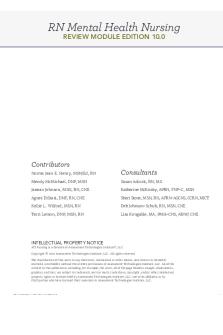
ebook for mental health nursing
- 219 Pages
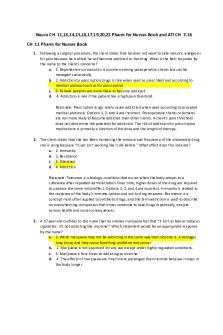
ATI TEST - mental health nursing
- 38 Pages

Cultural Considerations lesson
- 8 Pages
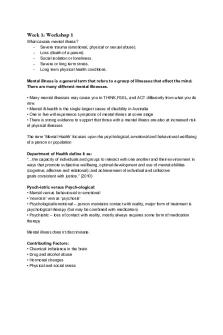
Nursing and Mental Health 1 Notes
- 62 Pages

Mental Health
- 44 Pages
Popular Institutions
- Tinajero National High School - Annex
- Politeknik Caltex Riau
- Yokohama City University
- SGT University
- University of Al-Qadisiyah
- Divine Word College of Vigan
- Techniek College Rotterdam
- Universidade de Santiago
- Universiti Teknologi MARA Cawangan Johor Kampus Pasir Gudang
- Poltekkes Kemenkes Yogyakarta
- Baguio City National High School
- Colegio san marcos
- preparatoria uno
- Centro de Bachillerato Tecnológico Industrial y de Servicios No. 107
- Dalian Maritime University
- Quang Trung Secondary School
- Colegio Tecnológico en Informática
- Corporación Regional de Educación Superior
- Grupo CEDVA
- Dar Al Uloom University
- Centro de Estudios Preuniversitarios de la Universidad Nacional de Ingeniería
- 上智大学
- Aakash International School, Nuna Majara
- San Felipe Neri Catholic School
- Kang Chiao International School - New Taipei City
- Misamis Occidental National High School
- Institución Educativa Escuela Normal Juan Ladrilleros
- Kolehiyo ng Pantukan
- Batanes State College
- Instituto Continental
- Sekolah Menengah Kejuruan Kesehatan Kaltara (Tarakan)
- Colegio de La Inmaculada Concepcion - Cebu



